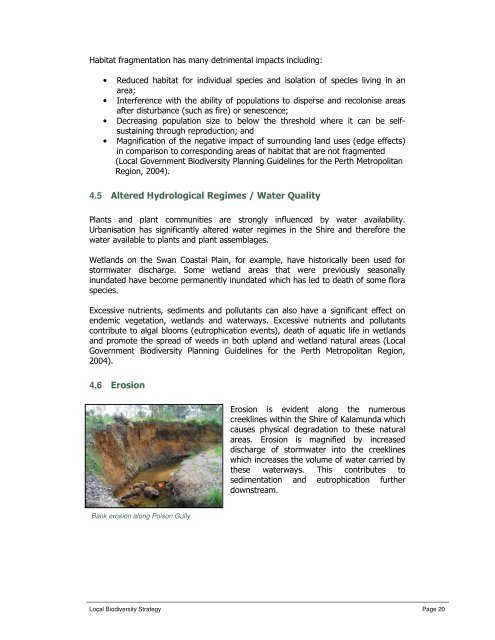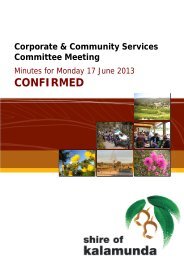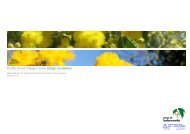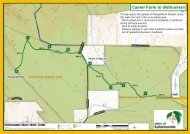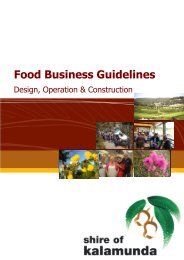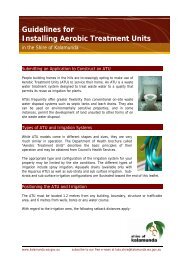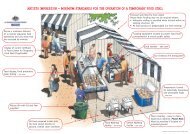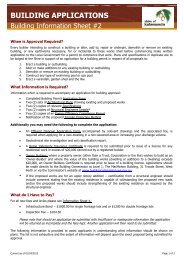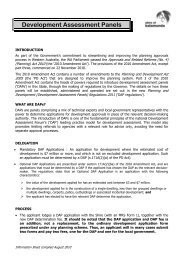Local Biodiversity Strategy: - Shire of Kalamunda
Local Biodiversity Strategy: - Shire of Kalamunda
Local Biodiversity Strategy: - Shire of Kalamunda
Create successful ePaper yourself
Turn your PDF publications into a flip-book with our unique Google optimized e-Paper software.
Habitat fragmentation has many detrimental impacts including:<br />
• Reduced habitat for individual species and isolation <strong>of</strong> species living in an<br />
area;<br />
• Interference with the ability <strong>of</strong> populations to disperse and recolonise areas<br />
after disturbance (such as fire) or senescence;<br />
• Decreasing population size to below the threshold where it can be selfsustaining<br />
through reproduction; and<br />
• Magnification <strong>of</strong> the negative impact <strong>of</strong> surrounding land uses (edge effects)<br />
in comparison to corresponding areas <strong>of</strong> habitat that are not fragmented<br />
(<strong>Local</strong> Government <strong>Biodiversity</strong> Planning Guidelines for the Perth Metropolitan<br />
Region, 2004).<br />
4.5 Altered Hydrological Regimes / Water Quality<br />
Plants and plant communities are strongly influenced by water availability.<br />
Urbanisation has significantly altered water regimes in the <strong>Shire</strong> and therefore the<br />
water available to plants and plant assemblages.<br />
Wetlands on the Swan Coastal Plain, for example, have historically been used for<br />
stormwater discharge. Some wetland areas that were previously seasonally<br />
inundated have become permanently inundated which has led to death <strong>of</strong> some flora<br />
species.<br />
Excessive nutrients, sediments and pollutants can also have a significant effect on<br />
endemic vegetation, wetlands and waterways. Excessive nutrients and pollutants<br />
contribute to algal blooms (eutrophication events), death <strong>of</strong> aquatic life in wetlands<br />
and promote the spread <strong>of</strong> weeds in both upland and wetland natural areas (<strong>Local</strong><br />
Government <strong>Biodiversity</strong> Planning Guidelines for the Perth Metropolitan Region,<br />
2004).<br />
4.6 Erosion<br />
Erosion is evident along the numerous<br />
creeklines within the <strong>Shire</strong> <strong>of</strong> <strong>Kalamunda</strong> which<br />
causes physical degradation to these natural<br />
areas. Erosion is magnified by increased<br />
discharge <strong>of</strong> stormwater into the creeklines<br />
which increases the volume <strong>of</strong> water carried by<br />
these waterways. This contributes to<br />
sedimentation and eutrophication further<br />
downstream.<br />
Bank erosion along Poison Gully<br />
<strong>Local</strong> <strong>Biodiversity</strong> <strong>Strategy</strong> Page 20


